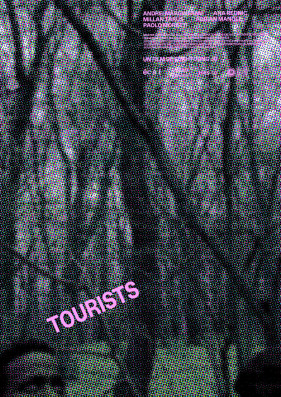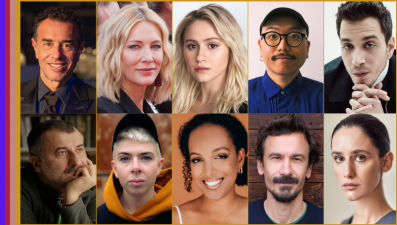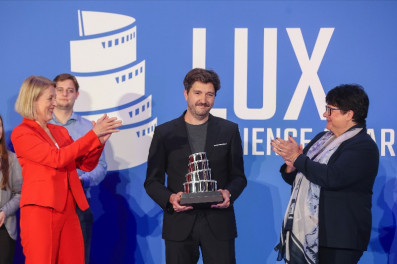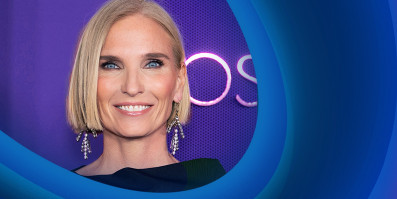The Platform - From metaphysical horror to dystopian critique of society
Galder Gaztelu-Urrutia, with its' debut, surprised both the audience and the critics!
After winning the People's Choice Award at the 2019 Toronto Film Festival, the Galder Gaztel-Urrutia's movie has continued to attract public and professionals attention. Now that Netflix has bought it, the debate over what this movie has to offer has reignited. I have to admit, it's a pretty bold move by Netflix to buy this dystopian horror. The film is aimed primarily to fans of unusual films. There is no way that people watching mainstream movies will see something of value in this movie. On the other side, I don't think many will be able to endure the movie until the end. Aside from the fascinating scenes of violence, which include cannibalism, the film lacks the usual narrative structure. It is divided into three narrative lines. The connection is the lead actor, the excellent Ivan Massague from Pan's Labyrinth, and the claustrophobic set design.
For comparison, another major dystopian film, it resembles Cube, directed by Vicenzo Natalia. But this is more because of the structure of the scenes. I don't know if to list everything that comes to my mind? But I should mention the guru of dystopian fiction- Orwell and his 1984.
VSMC - 'The Vertical Self-Management Center', is a dystopian prison with over 200 levels.
The film begins with the scene of the awaking of a new prisoner - Goreng - starring Ivan Massague, in a rather unusual minimalist setting. Concrete room with a hole down and up. Opposite him is just another roommate, the older Trimagas - starring Zorion Elugielor. Nothing but concrete and bed. Extremely obscure and seemingly sterile. Soon the Goreng and Trimagas get to know one another. The older prisoner introduces the new roommate somewhat into the unusual reality of the Platform. Once a day, a table with a bunch of different foods goes down through the top opening. They are at level 48, and above are 96 people who get that food before them. A frantic feeding follows as the table with food goes to the lower levels after a few minutes. At the lower levels, there is a great famine, and cannibalism is the rule rather than the exception.
At the lower levels, hunger is so big that cannibalism is the rule and not the exception!
After a while, Goreng and Trimagas wake up at level 127, Goreng is tightly bound, and Trimagasi prepares to slowly cut the pieces of meat off his body and eat. Little by little. Food never reaches this level. All is eaten by the people above them. Until it starts moving again. It is a simple scheme, who is down, is going up, and vice versa. But it is rare for both roommates to survive. This is where the second narrative line begins.
Goreng gets a new roommate, Imoguiri - starring Antonio San Juan. She is prone to social deliberation and the rational taking of food from the table. From her, Goreng learns that VSMC - 'The Vertical Self-Management Center', is an over 200-level prison. If those on the top modestly take food from the table, it is more likely for the people at the bottom to survive. Imaguiri believes that vertical prison is a social experiment, where only with humanity and care for others can one endure to the end.
In the third part, there is Baharat - starring Emilio Buale Coka, who, after trying to escape from prison upwards, finds sense in discovering a hidden message. He makes it so he and Goreng go down to the bottom. They strive to preserve food for those who are completely at the bottom. The more they descend, the more humanity disappears. It seems Imaguiri was wrong after all. People are as they are. An individual's care does not make a difference in the overall picture. Collective change of consciousness is much better, which is independent of individual effort.
But Urrutia does change the discourse in the end, trying to give some meaning to the individual sacrifice and enlightenment. The third narrative line is done mostly metaphysical. It is not easy to tell or make sense of the whole point. The author of the film, Galder Gaztelu-Urrutia, left each viewer individually the choice to interpret the end of the film at his discretion.
The end of the film is complex and subject to the viewer's interpretation.
I suppose a lot of dystopian movie fans, prone to Sci-fi movies, are glorifying the final part of the movie. Personally, I was most impressed with the first part of the movie. Interestingly, it is such a complex film, shot by director Urrutia, to whom this is the first feature film in his career. Not just that. The story was written by David Desolo and Pedro Rivero. And to them, this is the first movie they've worked on. Fascinating. I can’t wait to see how Urrutia’s career develops in the years to come. I believe you know that Urrutia is Basque, so the film was produced by Basque Films, again a very bold move. The film is a metaphysical horror experiment, so I believe it was not easy to decide to fund such work.
Ivan Massague in the lead role is excellent and Ararnazazu Callejo made an impressive soundtrack!
With great casting, Aranzazu Callejo music is a great accompaniment to the visually impressive film. The scenes when the table goes down, the music metrically determines the feeding time. Striking to such an extent, that you know by music when the table is going down. But what made this movie visually perfect, is the acting of Ivan Massague. I don't know if it's possible to get an award for acting in that kind of movie. But he deserved it, that's for sure.
The Platform is surely not for everyone. People who are used to watching movies for fun should skip this movie. If you have problems at any point in the film, just give up. It only gets harder and harder later. Still, those of you who endure 94 minutes of a film, as 200 levels of "Platform" awaits a surprising award!














